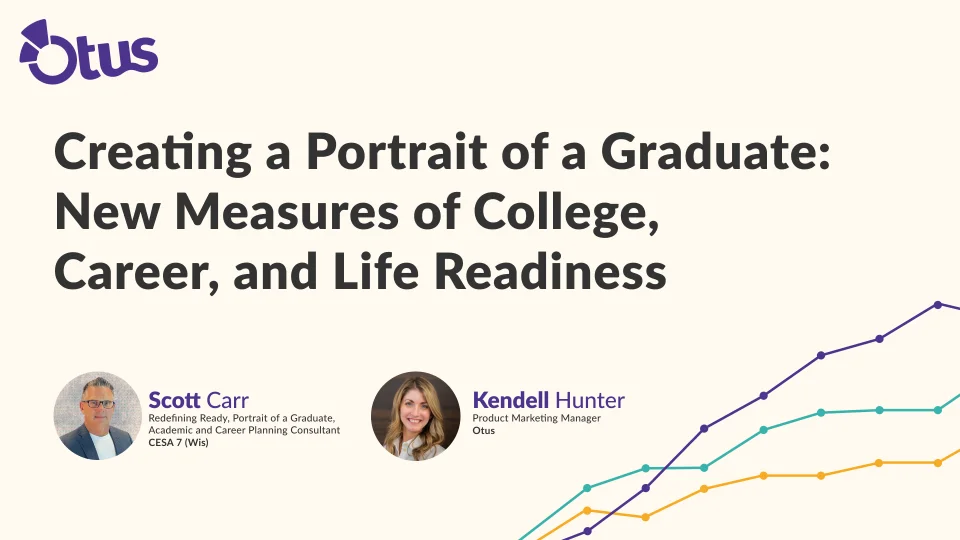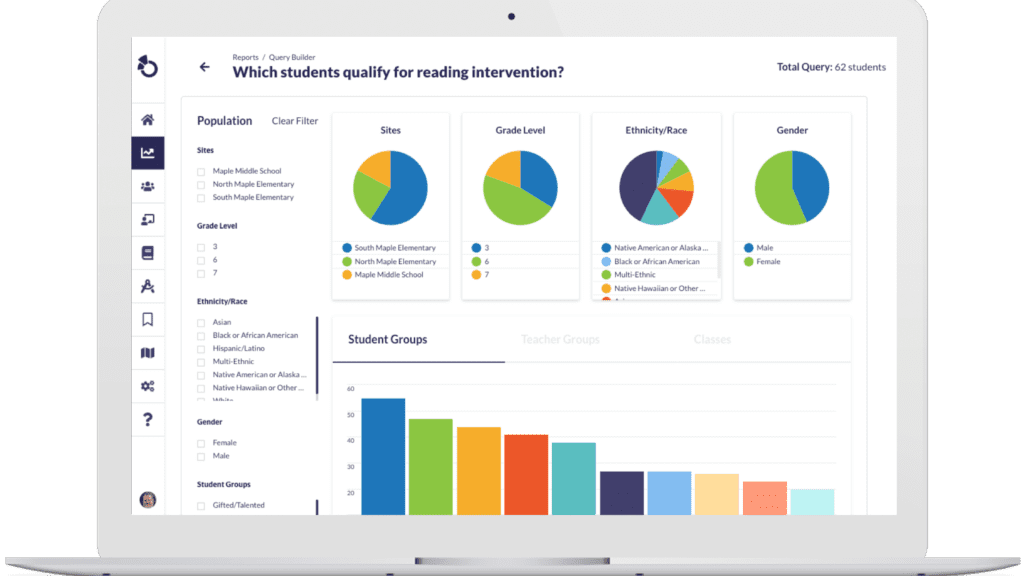Creating a Portrait of a Graduate: New Measures of College, Career, and Life Readiness
By: Kendell Hunter
Redefining Ready is a national initiative launched by the AASA that has introduced new metrics to determine if students are adequately prepared for college, career, and life, while creating a more comprehensive assessment of student performance than standardized testing provides.
Many states and districts are using these metrics to create a new “Portrait of a Graduate” that uses a more student-centered, holistic model of academic and career success.
Watch this webinar with Scott Carr, a school leader and consultant with over 30 years of experience in education, to learn more about these new measures of readiness, and some strategies for creating your district’s own Portrait of a Graduate.
Topics will include:
-
-
-
- What new measures of student success are defined by Redefining Ready
- How to refocus your school district on addressing readiness gaps
- How custom student support plans can be used to track student progress toward readiness goals
- How to create your district's "Portrait of a Graduate" that better defines future readiness
-
-

Three Key Takeaways from the Webinar
Developing a portrait of a graduate requires common beliefs about the purpose of an educational system
The first step in developing a portrait of a graduate is identifying common beliefs about the fundamental purpose of your educational system among key decision-makers like school boards, superintendents, and district offices. Creating a portrait of a graduate should be a community-based approach, running parallel with the revisioning, reimagining, and redefining of student success. If not done properly, these efforts could result in words on paper that lack a clear understanding of the true meaning and work required for students to benefit from new experiences and opportunities.
Student college and career readiness relies on an educational ecosystem, not just a school system
Sometimes in a school system, the school itself takes center stage, surrounded by various disconnected initiatives and programs emerging from it. However, an ideal educational ecosystem places the student at the center, focusing on the desired outcomes to help them succeed. This approach emphasizes creating meaningful opportunities and experiences within the classroom and community. Some school districts are moving toward academic and career planning as a solid foundation for this ecosystem, shifting focus from a school system to a more holistic educational ecosystem that aligns with shared beliefs.
Unbundled learning prepares students for their future careers and learning opportunities
Creating a portrait of a graduate requires educators to engage students in learning beyond the confines of the classroom, encourage their choices in sharing their acquired knowledge, and best prepare them for future work and learning. Referred to as unbundled learning, educators can achieve this by encompassing learning in various settings, accelerated pathways, and articulated options such as early college, dual enrollment, earn-and-learn ladders, technical training, and apprenticeships. However, it's crucial to point out that student readiness isn't solely about skilled trades or apprenticeship programs, it's about identifying essential skills students need before graduation. The key is to provide diverse learning experiences and opportunities that allow skills to transfer to students effectively.
Otus is the perfect platform to help you track college, career, and life readiness metrics at your school district. Watch this video to learn more!
Ready to learn more about how Otus can support personalized career, college, and life readiness plans in your school community? Get in touch with our team!
Request a demo!
See exactly how Otus can help your school accelerate student growth and improve student outcomes – all while saving educators time.




